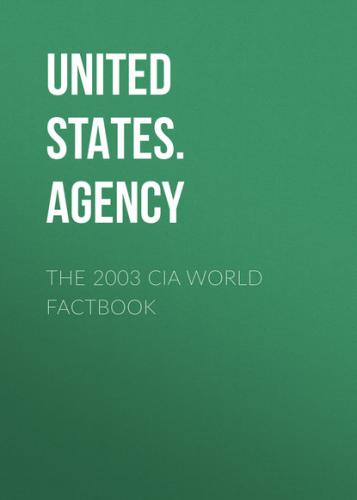optic net is very extensive; all telephone applications and Internet
services are available
international: satellite earth stations - 2 Intelsat (1 Atlantic
Ocean and 1 Indian Ocean) and 1 Eutelsat; in addition, there are
about 600 VSAT (very small aperture terminals) (2002)
Radio broadcast stations:
AM 2, FM 160 (plus several hundred repeaters), shortwave 1 (2001)
Radios:
6.08 million (1997)
Television broadcast stations:
45 (plus more than 1,000 repeaters) (2001)
Televisions:
4.25 million (1997)
Internet country code:
.at
Internet Service Providers (ISPs):
37 (2000)
Internet users:
3.7 million (2002)
Transportation Austria
Railways:
total: 6,024 km (3,641 km electrified)
standard gauge: 5,566 km 1.435-m gauge (3,524 km electrified)
narrow gauge: 34 km 1.000-m gauge (28 km electrified); 424 km
0.760-m gauge (89 km electrified) (2002)
Highways:
total: 200,000 km
paved: 200,000 km (including 1,633 km of expressways)
unpaved: 0 km (2000)
Waterways:
358 km (1999)
Pipelines:
gas 2,722 km; oil 687 km; refined products 149 km (2003)
Ports and harbors:
Enns, Krems, Linz, Vienna
Merchant marine:
total: 5 ships (1,000 GRT or over) 27,551 GRT/34,225 DWT
ships by type: cargo 4, container 1 (2002 est.)
Airports:
55 (2002)
Airports - with paved runways: total: 24 over 3,047 m: 1 2,438 to 3,047 m: 5 914 to 1,523 m: 3 under 914 m: 14 (2002) 1,524 to 2,437 m: 1
Airports - with unpaved runways: total: 31 1,524 to 2,437 m: 1 914 to 1,523 m: 3 under 914 m: 27 (2002)
Heliports: 1 (2002)
Military Austria
Military branches:
Land Forces (KdoLdSK), Air Forces (KdoLuSK)
Military manpower - military age:
19 years of age (2003 est.)
Military manpower - availability:
males age 15–49: 2,093,821 (2003 est.)
Military manpower - fit for military service:
males age 15–49: 1,725,123 (2003 est.)
Military manpower - reaching military age annually:
males: 49,090 (2003 est.)
Military expenditures - dollar figure:
$1.497 billion (FY01/02)
Military expenditures - percent of GDP:
0.8% (FY01/02)
Transnational Issues Austria
Disputes - international: minor disputes with Czech Republic and Slovenia continue over nuclear power plants and post-World War II treatment of German-speaking minorities
Illicit drugs:
transshipment point for Southwest Asian heroin and South American
cocaine destined for Western Europe
This page was last updated on 18 December, 2003
======================================================================
@Azerbaijan
Introduction Azerbaijan
Background:
Azerbaijan - a nation with a Turkic and majority-Muslim population
- regained its independence after the collapse of the Soviet Union
in 1991. Despite a 1994 cease-fire, Azerbaijan has yet to resolve
its conflict with Armenia over the Azerbaijani Nagorno-Karabakh
enclave (largely Armenian populated). Azerbaijan has lost 16% of its
territory and must support some 800,000 refugees and internally
displaced persons as a result of the conflict. Corruption is
ubiquitous and the promise of widespread wealth from Azerbaijan's
undeveloped petroleum resources remains largely unfulfilled.
Geography Azerbaijan
Location:
Southwestern Asia, bordering the Caspian Sea, between Iran and
Russia, with a small European portion north of the Caucasus range
Geographic coordinates:
40 30 N, 47 30 E
Map references:
Asia
Area:
total: 86,600 sq km
note: includes the exclave of Naxcivan Autonomous Republic and the
Nagorno-Karabakh region; the region's autonomy was abolished by
Azerbaijani Supreme Soviet on 26 November 1991
water: 500 sq km
land: 86,100 sq km
Area - comparative:
slightly smaller than Maine
Land boundaries:
total: 2,013 km
border countries: Armenia (with Azerbaijan-proper) 566 km, Armenia
(with Azerbaijan-Naxcivan exclave) 221 km, Georgia 322 km, Iran
(with Azerbaijan-proper) 432 km, Iran (with Azerbaijan-Naxcivan
exclave) 179 km, Russia 284 km, Turkey 9 km
Coastline:
0 km (landlocked); note - Azerbaijan borders the Caspian Sea (800
km, est.)
Maritime claims:
none (landlocked)
Climate:
dry, semiarid steppe
Terrain:
large, flat Kur-Araz Ovaligi (Kura-Araks Lowland) (much of it below
sea level) with Great Caucasus Mountains to the north, Qarabag
Yaylasi (Karabakh Upland) in west; Baku lies on Abseron Yasaqligi
(Apsheron Peninsula) that juts into Caspian Sea
Elevation extremes:
lowest point: Caspian Sea −28 m
highest point: Bazarduzu Dagi 4,485 m
Natural resources:
petroleum, natural gas, iron ore, nonferrous metals, alumina
Land use: arable land: 19.31% permanent crops: 3.04% other: 77.65% (1998 est.)
Irrigated land:
14,550 sq km (1998 est.)
Natural hazards:
